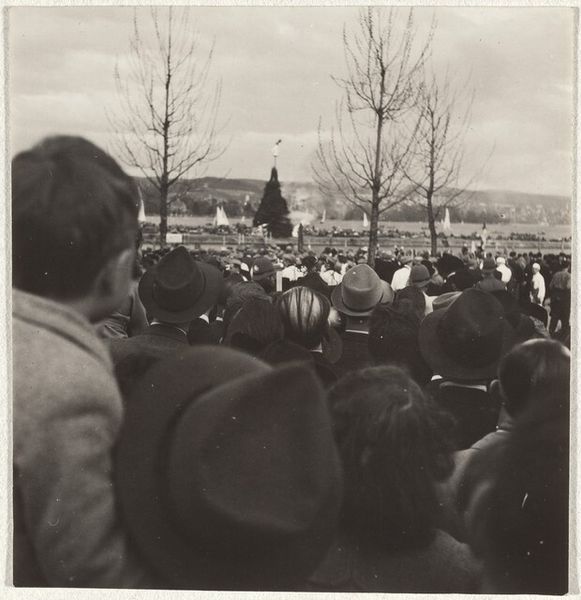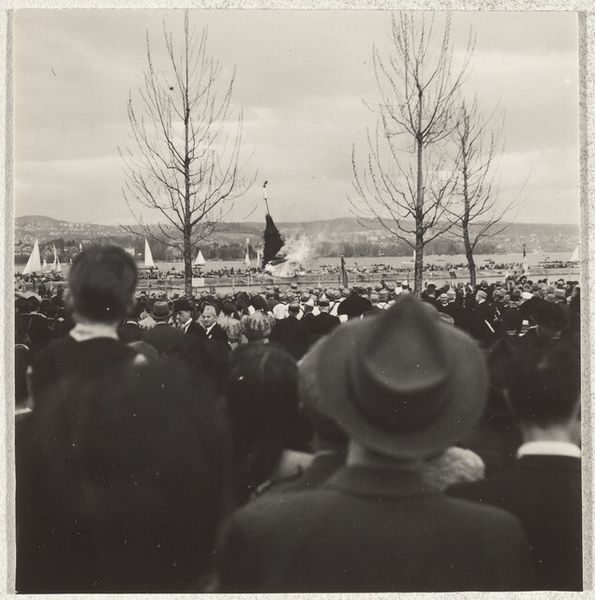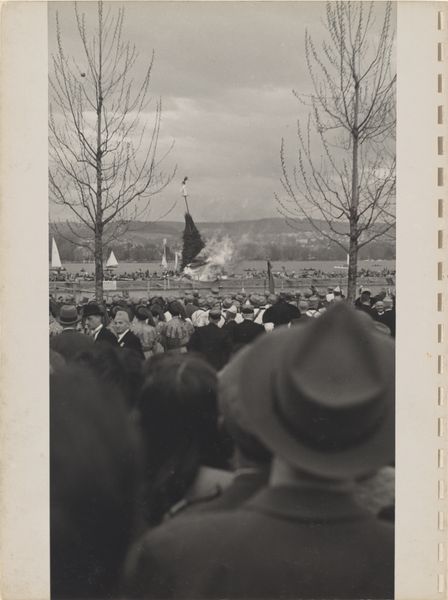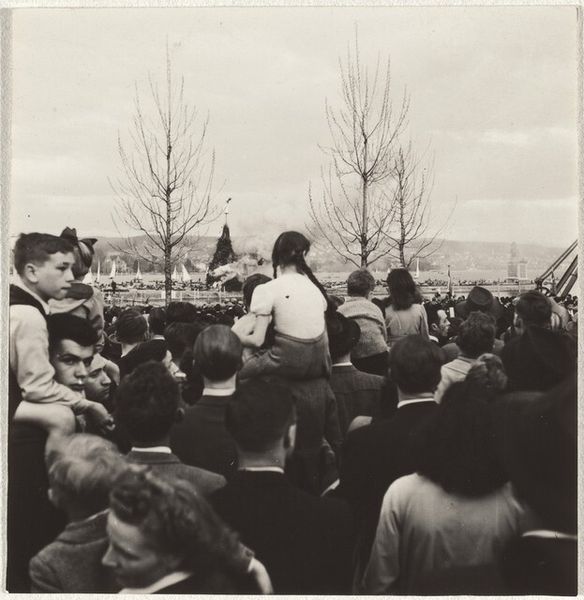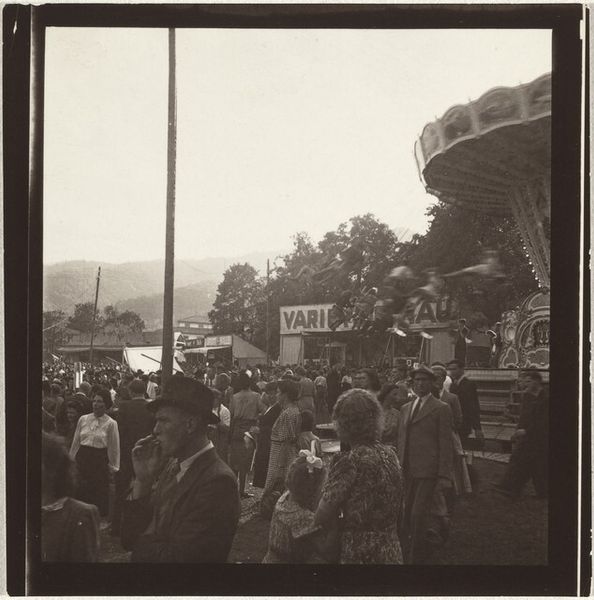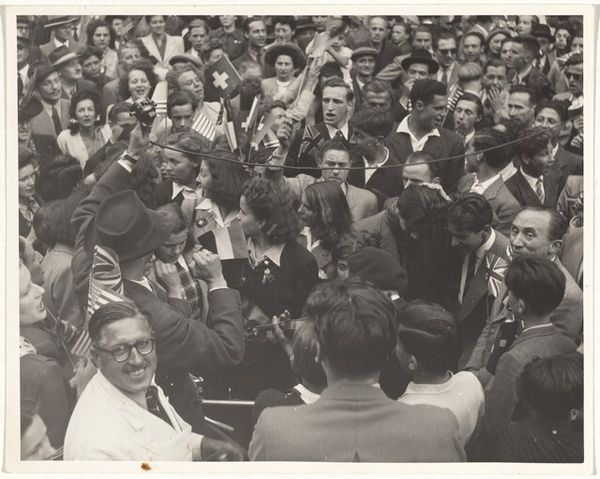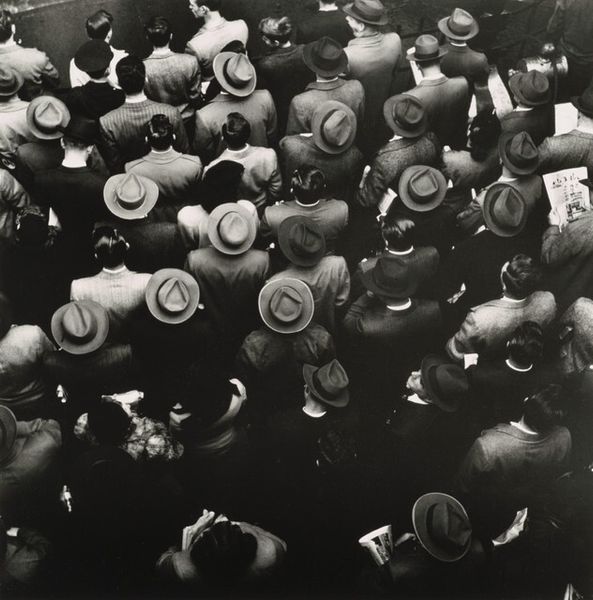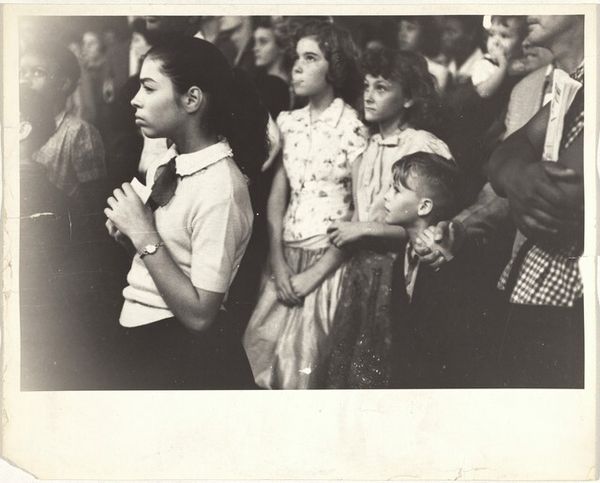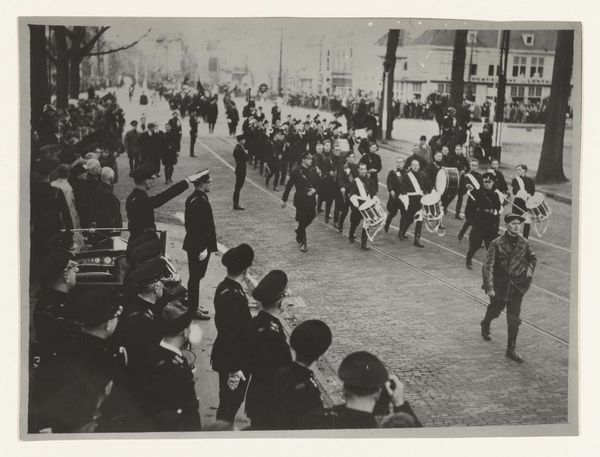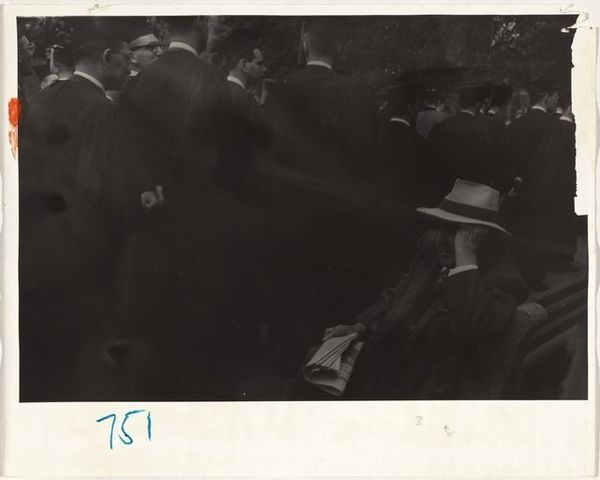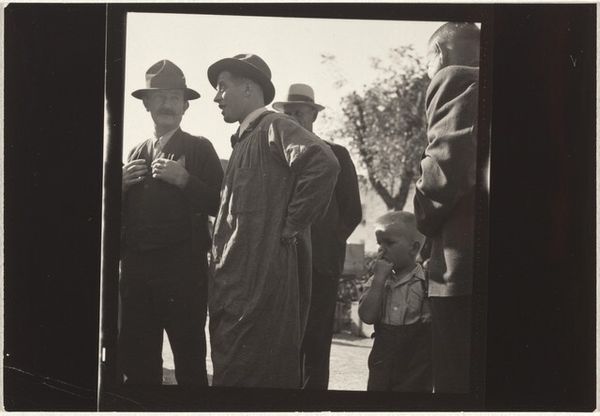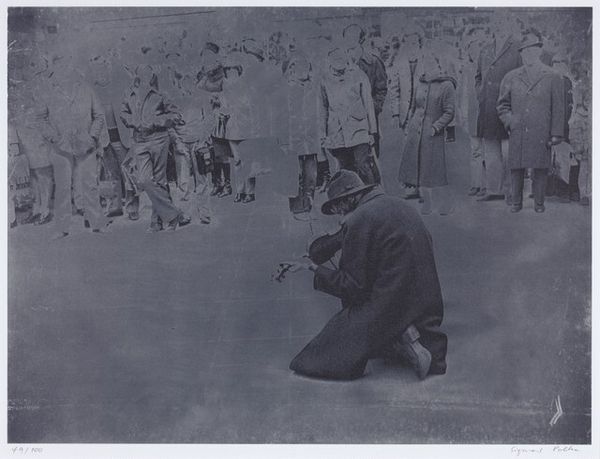
print, photography
#
film photography
#
black and white photography
# print
#
landscape
#
street-photography
#
photography
#
monochrome photography
#
realism
Dimensions: sheet (trimmed to image): 5.7 x 5.5 cm (2 1/4 x 2 3/16 in.)
Copyright: National Gallery of Art: CC0 1.0
Curator: I'm drawn to the somber feeling emanating from this photograph. The gray tones and indistinct figures seem to create an atmosphere of both anticipation and a subdued sense of something…lost. Editor: I agree. Robert Frank’s “Crowd Before Waterfront,” taken in 1945, definitely speaks to the mood of that era, a time overshadowed by WWII and its aftermath. There’s a weariness that hangs over it. Notice the almost impenetrable mass of people between us and the waterfront scene; there’s a palpable distance from whatever they’re observing. Curator: That barrier also gives us this sense of the individual within the collective. Each blurred face still manages to retain a unique identity, perhaps accentuated by hats, stance, or positioning within the overall frame. Do you think that reflects a specific message? Editor: Definitely. The hats alone speak volumes. Each shape indicates class, profession, and the hopes and anxieties held during a period of widespread change and collective recovery after the war. There’s also a profound lack of individuality in the sense that the subjects are facing one central location as though in the thrall of a single event; there is a cultural psychology at work here. Curator: Interesting point about cultural psychology, indeed. Beyond their immediate appearance and place in that social environment, the individual figures remind me of symbolic forms themselves – a dark silhouette set against a somewhat unknowable distance and watery expanse. The three prominent bare trees above the figures provide a sense of verticality that almost creates a triptych of human anticipation between Earth and sky. Editor: Yes! It is fascinating to think how, even in what seems like a simple street photography shot, Frank manages to distill such complex narratives regarding identity, community, and belonging within the shifting terrains of postwar society. The image isn't just a photograph, but a commentary about history in progress. Curator: Frank understood and beautifully portrayed our historical reality, one photograph, one moment at a time. Editor: An insightful piece, especially when you understand the context of its creation. It is so impressive how he could accomplish that and capture what he saw on film, creating the photographic symbolism he has become so known for.
Comments
No comments
Be the first to comment and join the conversation on the ultimate creative platform.
